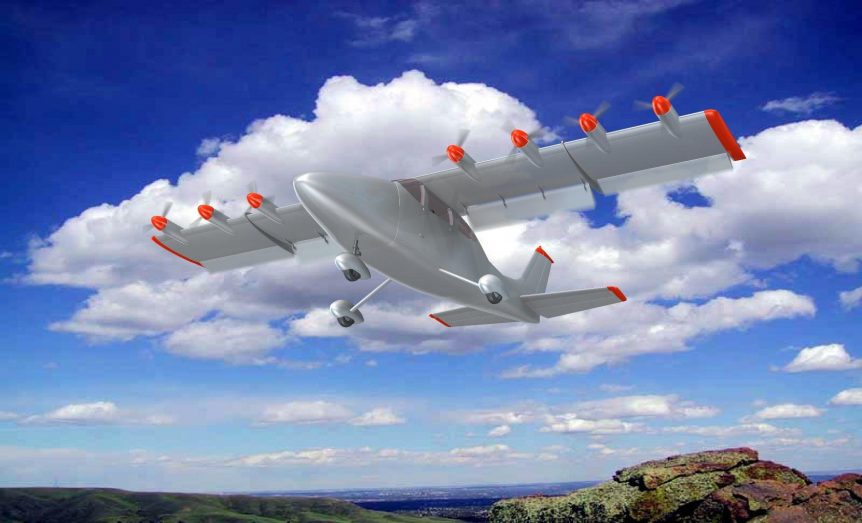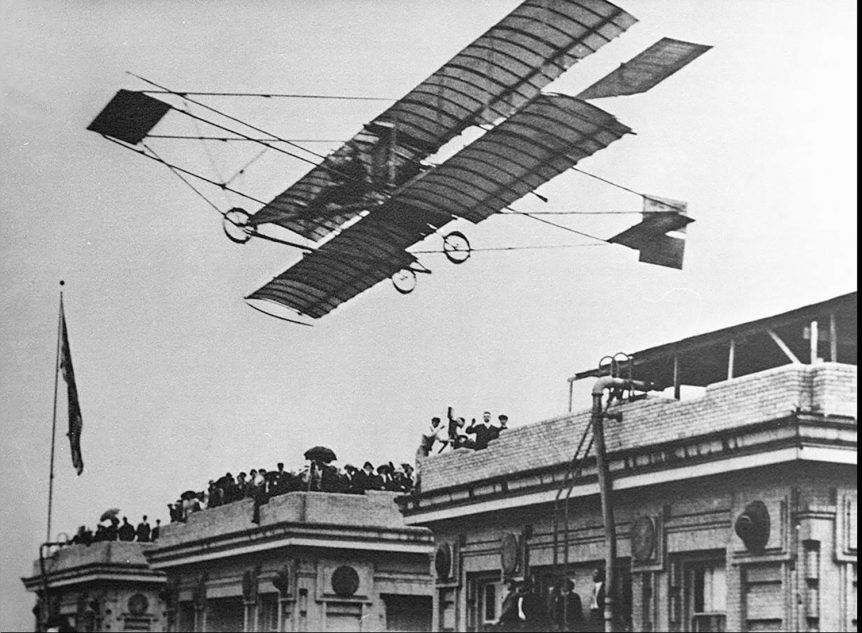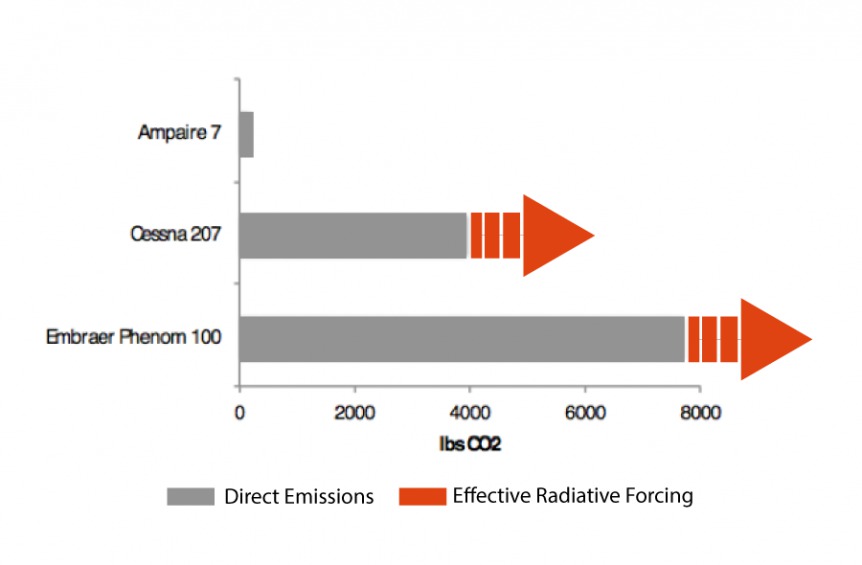Airflow, a recent entry into the electric conventional short takeoff and landing (eCSTOL) market, is pushing forward into fielding a full-scale demonstrator. They are also testing the limits of Artificial Intelligence (AI) in nailing their landings. Airflow’s mission is spelled out in big ideas and bold fonts. “Freight without the wait. The first electric Short Take Off and Landing (eSTOL) aircraft for middle-mile logistics. 1 pilot, 500 lbs of cargo, 0 lbs of CO2.” Airflow’s concept illustrations show a twin-boom pusher with 10 distributed electric motors along the wing’s leading edge. Trying out their ideas for extremely short takeoffs and landings will fall to a modified Cessna 210. In the meantime, the team is advancing its concept at this time with a model Cessna 150 and showing some success at nailing their landings. Airflow calls its pilot assistance program, “Virtual Tailhook,” and it seems to serve that purpose in making landings possible in a tight space. Videos show the progress …
Airflow: Coming to a Rooftop Near You?
“1 pilot, 500 pounds of cargo,” reads Airflow’s headline for its electric STOL (Short Take Off and Landing) aircraft. Reaching for the “middle-mile” cargo delivery market, Airflow’s new design promises to be four times faster than trucks, operate at one-third the cost of helicopters or eVTOL (electric Vertical Take Off and Landing) vehicles, and require only 150 feet for takeoffs and landings. eVTOL Reconsidered Airflow’s management and engineering team come from previous experience in the eVTOL world, most recently with Airbus’ Vahana program. Headed by Marc Ausman, The team has “over 60 years of aerospace experience,” with companies including Eclipse Aviation, Northrop Grumman, Uber Elevate, Airware, and Scaled Composites. The team determined their design can carry a pilot and a 500-pound payload using less power than comparable eVTOLs because multirotors carry the full weight of the aircraft at all times, or for some designs, until they are able to transition to full forward flight. This helped form the decision to …
Ampaire and its Zero Emission Airplane
Ampaire, a California-based startup, has a simple, two-fold set of goals. Its TailWind™ aircraft will solve the problems of high operating costs for short-haul airlines and reduce emissions by 99 percent. They must make a compelling argument since they won one of ten awards at the recent the 2017 Hello Tomorrow Global Summit Deep Tech Challenge in Paris. Kevin Noertke, CEO of the firm, presented a brief but energetic rundown on the company’s goals and the elegant aeronautical offering he and co-founders Cory Combs (CTO) and Ryan Bilton (CFO) envision. Note the crowd, the band, and the high production values of the Summit. Your editor wondered about the “Powered By” reference to Airbus. Kevin cleared that up in an email. “The ‘Powered by’ statement is a phrasing Hello Tomorrow uses to describe where their sponsorship funding came from. “For example: “ONE €100K GRAND PRIZE: For the best early-stage startup – Equity-free, no strings attached – Powered by BNP Paribas …
Elektra One Solar or Luminati VO-Substrata?
Your editor saw a news item from Sun ‘n Fun about a new solar-powered airplane and recognized the design as one from Calin Gologan’s PC-Aero, an aircraft design and consulting firm in Germany. General Aviation News credited the airplane’s design and construction to Luminati Aerospace in New York state. The story did not mention Gologan’s involvement, though, a possible oversight. An alert reader commented on the similarity of the airplane to the Elektra One Solar. A few months later, your editor saw an Associated Press story from Calverton, New York, which explained, “Pilot Robert Lutz flew the VO-Substrata aircraft for about 20 minutes in the first test flight opened to the public. The white aircraft features wing-mounted solar cells and has a wingspan of about 43 feet. Logos of several companies and other entities involved with its production are plastered on both sides, similar to the sponsor decals on NASCAR race cars.” Different reports have speculated on the source of funding for the …
EAS IX: Phil Barnes Double Header
Phil Barnes, aviation consultant, opened each days’ sessions at this year’s Electric Aircraft Symposium: on Friday with a talk on dynamic soaring as taught by the birds, and on Saturday on regenerative power to keep a dynamic soaring aircraft in perpetual flight without any outside energy source other than the sun. Phil has 31-years of experience in the performance analysis and computer modeling of aerospace vehicles and subsystems at Northrop Grumman. He has been to Antarctica twice to photograph and study the flight dynamics of the Albatross, lessons he applies to the ideals of dynamic soaring and energy retrieval in flight. His Friday morning talk, “How Flies the Albatross,” discussed the flight mechanics of dynamic soaring, that mode of maintaining or gaining altitude from horizontal wind gusts, something the albatross uses to fly huge distances searching for food for itself and its family. From the observations of well-known naturalists, he showed the bird “could soar against strong winds without a …
A Comparison Too Far
A recent entry comparing the German Carplane® and Burt Rutan’s BiPod has prompted a response from John Brown, who found the posting of concern for the misapprehensions it might cause in readers. He notes, for instance, “Your current article portrays us as a large Govt. Co. (we got a small subsidy) going up against a ‘charity’ organization (Northrop-Grumman’s subsidiary, Scaled Composites) in whose name the BiPod is registered at the FAA – as a glider; “It compares us to 1930s modular concepts where actually the BiPod’s wings are screw-on/screw-off ‘modular’ and use that older concept; “It attributes a commuter ‘pitch’ to us where, in fact, we’re not aiming for that market at all. [Thanks for your apology. However, the world is still quoting your article.] “It implies we somehow responded to Burt Rutan (we disclosed 2008 – via patent). We’ve displayed at the world’s largest Trade Fair & Europe’s largest GA show – not at a desert strip. We’ve published …



